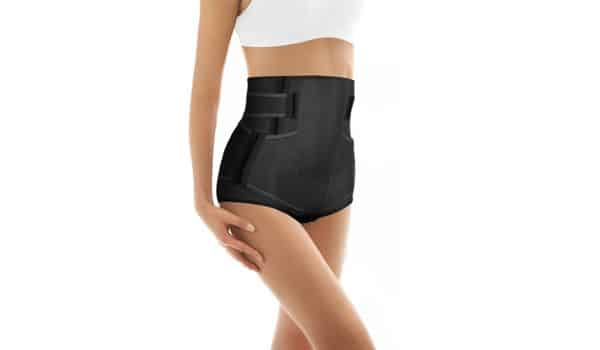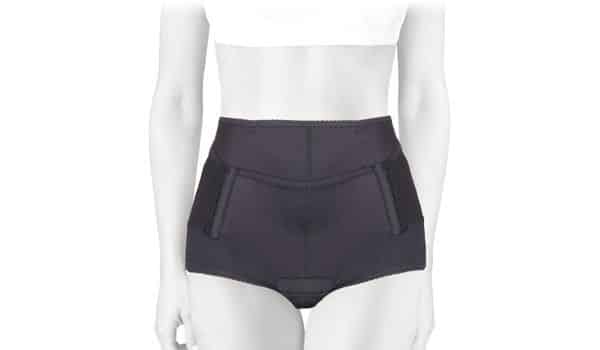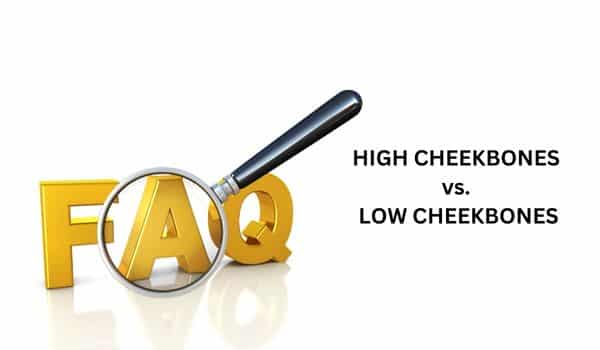

Beauty Uncompromised Request a Private Consultation



An Abdominoplasty or Tummy tuck is a popular body contouring surgery that helps both men and women achieve their aesthetic goals. It can include abdominal skin and fat removal, muscle tightening, and other advanced approaches to address a variety of aesthetic and functional concerns. The wearing of compression garments after a tummy tuck is one of the most important parts of the abdominoplasty recovery procedure. Made from durable, high-quality stretchable fabrics, the post-operative compression garment helps support your tissues to achieve optimal results.
Dr. Karan Chopra M.D. is an experienced plastic surgeon who has helped hundreds of patients achieve their aesthetic goals with the help of body contouring procedures
A tummy tuck is a body contouring procedure that includes skin removal, muscle tightening, liposuction and other advanced techniques to address a wide range of aesthetic and functional concerns, creating smooth, tight and beautiful torso. The abdominoplasty procedure usually takes 2-3 hours. On the lower abdomen, an incision is made just above the pubic area so it can be concealed in your favorite underwear or swimwear. The length of the incision will be determined by the amount of excess skin to be removed. Liposuction is also commonly used to remove stubborn fatty tissue during abdominoplasty. After removing the loose skin, the remaining abdominal skin is stretched and sutured with layers of absorbent sutures for a smooth, firm new contour.
What Are Compression Garments?
Compression garments are articles of clothing worn after most types of cosmetic surgery, such as tummy tuck, breast surgery, weight loss surgery, and liposuction. They are used for post-operative care and recovery after abdominoplasty, to aid in the healing process, and to create a more beautiful contour for the abdomen. The compression garment is also used to relieve pain after surgery and reduce swelling and bruising caused by the procedure.
A compression garment can improve your surgery outcomes, speed up healing, and help you achieve your desired results. Compression clothing helps the skin and muscles heal by assisting the lymphatic system in reducing postoperative swelling. They also gently encourage tissue to adhere to the abdominal wall and they are essential for good results as they keep everything in place. They also help reduce edema (swelling) that occurs after surgery. Most swelling should subside within three to six months, so clothing is essential for the first month after the procedure.

A compression garment is an essential part of wound healing after a tummy tuck. Here’s why it’s so beneficial to wear compression garments during initial recovery as directed by your surgeon:
A faster recovery is one of the major benefits of wearing a compression garment after abdominoplasty. In many ways, compression garments help you feel better sooner. Patients can get up again and resume life and daily activities much faster with a much quicker recovery.
Most plastic surgeries result in swelling. This is especially true during contouring, where excess fluid can easily cause excess edema. A compression garment puts pressure on the surgical area, limiting edema and thus reducing swelling. This is particularly useful after the drain has been removed and is no longer available to assist in the egress of fluid produced during the healing process.
It is well known that all surgical procedures are painful, and it is especially common for patients to begin to heal soon after surgery. Pain from the surgery commonly occurs at the incision site, as well as in internal areas and anywhere there is inflammation. A compression garment holds tissues in place, protects different areas of the body affected by surgery, and relieves pain.
Bleeding and bruising may occur after a tummy tuck. However, with a compression garment, these areas are held in place, reducing the risk of bruising and bleeding after surgery.
The excess of fat and skin tissues are eliminated during abdominoplasty. To achieve better contours without any irregularities is important to wear compression garments.
A seroma is a sac containing excess serous fluid that fills a pocket under the skin (when blood is present, it is called a hematoma). According to several studies, including one published in the Annals of Aesthetic Surgery in 2002, seroma is the most common complication associated with a tummy tuck. Continuous uniform pressure applied by your compression garment aims to press down on tissues that have been rearranged during your surgery, minimizing or eliminating pockets where fluid can accumulate. Clothing also helps with blood circulation, therefore reducing the chances of seroma

Compression garments should be worn day and night for three weeks after abdominoplasty. During this initial time, they should only be taken off when showering. Dr. Chopra encourages tummy tuck patients to shower by the second day after surgery. After the initial three week period, Compression Suits should be worn during the day for the next three to six weeks but can be taken off at night. Ensure that the incision is covered with clothing to reduce the chances of incision healing issues.
As long as the garment puts gentle pressure on the operated area, it will facilitate the recovery.
The wear time of a compression garment has three different phases.The wear time of a compression garment has three different phases.
Stage One garments are worn immediately after liposuction or abdominoplasty. They help remove excess swelling caused by fluid buildup caused by bodily processes that increase circulation to the surgical area. These types of clothing allow easy drainage of fluid after surgery. They have zippers, hooks and eyes to reduce friction when putting on and taking off. The patient will have to wear the initial dressing for 1-2 weeks or longer depending on the nature of the surgery. The open crotch on clothing at an early stage eliminates the need to undress when going to the bathroom. Stage one garments should be worn 24 hours a day, seven days a week, and only removed when bathing or cleaning the garment. These garments should not be excessively tight because during the initial time period after surgery excessive compression can damage blood flow to the healing abdominoplasty flap.
After four weeks, your body won’t release much fluid around the incision, allowing you to start wearing different types of clothing. Second-stage garments, unlike first-stage garments, have no zippers or eyelets, making them even more comfortable to wear under your clothes. Second-stage clothing is usually worn for 2-8 weeks, but should not be worn continuously. These should be removed in the evening and while sleeping. Conversely, you may elect to wear them only in the evening and to bed and not wear them during the day.
During the third stage of recovery from surgery, the new body contour is visible. The swelling should have subsided in the past three months, but if it hasn’t, you can continue to wear compression clothing until the swelling is gone or only after an active day where you notice increased swelling is present.
A compression garment’s quality is crucial. When purchasing one, keep the following in mind:

For instance, some clothing lines use silver nanoparticles to stop bacteria from growing on the skin. The company claims that by slowing down bacterial growth, healing would be accelerated and odors will be removed. Dr. Chopra encourages you to have several garments available so that one can always be laundered, clean and available for use.
To improve your comfort, choose a blend of breathable materials. Avoid wearing inexpensive clothing since they could be excessively abrasive and will hinder the skin’s ability to recover. Fabric that is breathable aids in wicking away sweat to keep you dry and comfortable.
A strong, flexible fabric that provides decent support will work well.
These products have been created to keep your skin dry. This will not only make you more comfortable, but it will also stop the spread of bacteria because moisture and heat encourage the growth of germs. Additionally, it can reduce bacterial smells.
This will prevent skin irritation during the recovery period.
Compression clothing has zippers and eyelets instead of adhesives with velcro closures. For your comfort, zippers and clasps should be simple to access. This will reduce the anxiety associated with dressing and changing.

Abdominoplasty is a widespread procedure, with most patients requiring 2 to 3 weeks off work to recover. While you’ll start to feel more like yourself within the first 1-2 weeks, it’s essential to realize that your body is still recovering from major surgery. Heavy physical activity, including exercise, may be prohibited for up to six weeks or more, while gentle walking is recommended. The patient should not be fully upright to maintain the integrity of the incision. Short, gentle walks improve circulation and prevent complications, such as blood clots or DVT. Most abdominoplasty patients are considered to be fully recovered after about six weeks. However, the result will continue to improve over the next several weeks and months as residual swelling subsides, tissues settle, and scars begin to diminish.
Some of the most helpful things a patient can do to ensure a successful and speedy recovery from a tummy tuck include:
Follow all instructions given by Dr. Chopra;
Take medication as prescribed;
Attend follow-up appointments;
Wear compression clothing as recommended;
Eat well, stay hydrated;
Don’t rush to recover.
You must wear your compression clothing at all times within the first three weeks, except in the shower. The compression should be snug but not excessively tight. An overly tight compression garment can damage blood supply to your healing tissues. It also depends on how you heal and the specific instructions of Dr. Chopra.
Yes, you can take it off in the shower after you have been permitted to do so. Most procedures allow you to shower two days after surgery. After showering, be sure to dry thoroughly and put on your clothes again. During the first six weeks after surgery, Dr. Chopra does not allow you to use a bathtub, hot tub, pool or swim in a lake/ocean.
A compression garment should apply mild (but not excessive) pressure to the body. It should be flat and smooth on the skin, not bulging or bulky. On the other hand, compression clothing should be comfortable and any tightness should not impede circulation or cause fluid accumulation. The tight-fitting compression garment allows the hand to glide smoothly.
Both of them are postoperative devices that provide moderate pressure to aid healing and minimize swelling. Initially, many patients will wear an abdominal binder after abdominoplasty surgery. An abdominal binder is a type of binder usually created from stretchy and elastic materials with velcro. Compression garments on the other hand instead of Velcro, often have hooks or zippers for attachment. They also usually cover more skin than compression binders.
